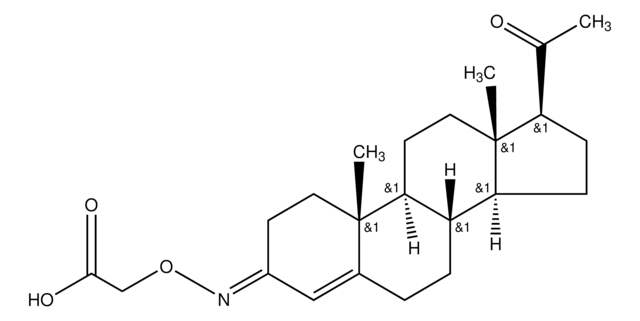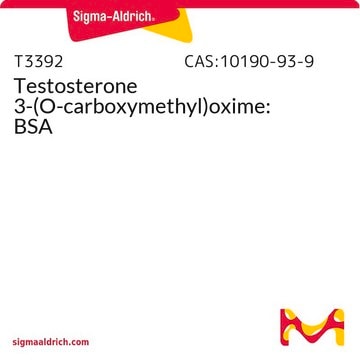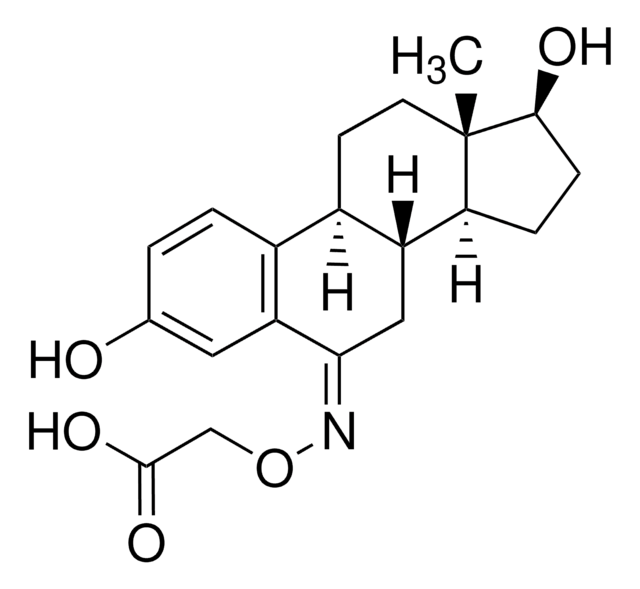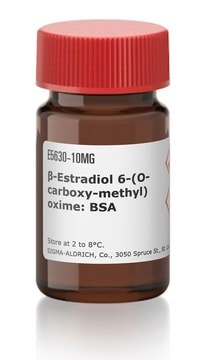The solution stability of this product has not been determined internally. Various sources state that solutions in DMSO or DMF may be stored at -20° for up to 3 months. The solution stability should be determined by the end-user.
W102
(R)-(+)-WIN 55,212-2 mesylate salt
≥98% (HPLC), powder, CB2 agonist
Synonym(s):
(R)-(+)-[2,3-Dihydro-5-methyl-3[(4-morpholinyl)methyl]pyrrolo[1,2,3-de]-1,4-benzoxazinyl]-(1-naphthalenyl)methanone mesylate salt, WIN 55212-2 methanesulfonate, WIN 552122 mesylate
Select a Size
$658.00
Select a Size
About This Item
$658.00
Recommended Products
Product Name
(R)-(+)-WIN 55,212-2 mesylate salt, ≥98% (HPLC)
Quality Level
Assay
≥98% (HPLC)
form
powder
drug control
regulated under CDSA - not available from Sigma-Aldrich Canada
color
white to beige
solubility
0.1 M HCl: 0.25 mg/mL
DMSO: 12 mg/mL
45% (w/v) aq 2-hydroxypropyl-β-cyclodextrin: 2.4 mg/mL
0.1 M NaOH: insoluble
H2O: insoluble
SMILES string
CS(O)(=O)=O.Cc1c(C(=O)c2cccc3ccccc23)c4cccc5OC[C@@H](CN6CCOCC6)n1c45
InChI
1S/C27H26N2O3.CH4O3S/c1-18-25(27(30)22-9-4-7-19-6-2-3-8-21(19)22)23-10-5-11-24-26(23)29(18)20(17-32-24)16-28-12-14-31-15-13-28;1-5(2,3)4/h2-11,20H,12-17H2,1H3;1H3,(H,2,3,4)/t20-;/m1./s1
InChI key
FSGCSTPOPBJYSX-VEIFNGETSA-N
Gene Information
human ... CNR1(1268) , CNR2(1269)
General description
Application
Biochem/physiol Actions
Features and Benefits
Preparation Note
Legal Information
Storage Class Code
11 - Combustible Solids
WGK
WGK 3
Flash Point(F)
Not applicable
Flash Point(C)
Not applicable
Personal Protective Equipment
Choose from one of the most recent versions:
Certificates of Analysis (COA)
Don't see the Right Version?
If you require a particular version, you can look up a specific certificate by the Lot or Batch number.
Already Own This Product?
Find documentation for the products that you have recently purchased in the Document Library.
Customers Also Viewed
-
Once reconstituted, at what temperature should it be kept?
1 answer-
Helpful?
-
-
Can WIN be dissolved in Dimethylformamide (DMF) to achieve a concentration of 10 mM?
1 answer-
The solubility of this chemical in DMF has not been officially determined. Nevertheless, according to various sources, this chemical can be solubilized in approximately 30 mg/ml of DMF.
Helpful?
-
-
Hello, How should this product be stored (what temperature ?). Thanks in advance.
1 answer-
This product is to be stored in room temperature.
Helpful?
-
-
Is WIN dissolvable in Dimethylformamide (DMF) in a concentration of 10 mM?
1 answer-
The solubility of this chemical in DMF has not been determined. However, various sources state this chemical can be solubilized in about 30 mg/ml of DMF.
Helpful?
-
Active Filters
Our team of scientists has experience in all areas of research including Life Science, Material Science, Chemical Synthesis, Chromatography, Analytical and many others.
Contact Technical Service










